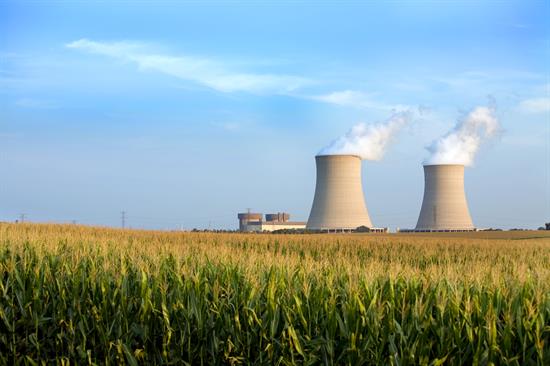In September 1963, President John F. Kennedy stood behind a podium in front of more than 30,000 people in south central Washington to break ground on the most powerful fission-heated generating plant of its time. “This is a partnership in a very real sense between the national government and the local community for the benefit of our country,” he said of the project at Hanford.
This past spring — nearly six decades after President Kennedy’s speech — that same podium was used just a stone’s throw away to announce a new partnership created to deploy the next generation of American nuclear technology.
This partnership between advanced reactor developer X-energy; Energy Northwest, which operates nuclear, solar, storage, hydro and wind facilities throughout the Northwest; and Grant Public Utility District, which serves more than 40,000 customers in central Washington’s Grant County, demonstrates a new, forward-looking model for private-public collaboration for the future of clean-energy innovation.
Together with the U.S. Department of Energy, through its pioneering Advanced Reactor Demonstration Program, the partnership will build and operate a first-of-its-kind, high-temperature, gas-cooled “pebble bed” reactor on American soil. Following a thorough Nuclear Regulatory Commission safety review of the technology and the proposed site north of Tri-Cities — as well as rigorous environmental analysis — permits could be issued mid-decade, with the reactor’s new carbon-free electrons arriving on the grid in 2027-2028.
The 220,000 pebbles used in the reactor are polished spheres of graphite. Inside those graphite spheres are thousands of poppy seed-sized uranium kernels, surrounded in thin layers of ceramic carbon and silicon carbide. The reactor won’t have to shut down to refuel; the operators will add pebbles from the top and remove spent pebbles from the bottom while the reactor is running.
The result is a high-availability, reliable, flexible reactor that creates high-temperature steam through nuclear power, pairing advantageously with other carbon-free partners on the region’s grid. Because it uses inert helium gas to transfer heat from the graphite fuel pebbles — instead of the water and standard fuel rods most reactors use today — the X-energy plant requires fewer safety systems and will be faster to license and build than traditional lightwater-based nuclear reactors.
The reactor will be able to do several jobs at once: it will power thousands of homes in the Pacific Northwest with carbon-free energy, lay the groundwork for decades of exports to countries that are hungry for clean and reliable electricity, reassert American leadership and innovation in the clean-energy sector, and solidify our ability to compete with international rivals like Russia and China.
Advanced nuclear is the most affordable way to meet our goal of a clean-energy future. Energy Northwest released a study last year that found adding “firm,” or baseload, capacity to the Pacific Northwest’s mix of other baseload and intermittent sources would save the region more than $8 billion a year in a zero-carbon system.
We echo the goals of industries, conservation partners and local governments in calling for a clean-energy future rooted in American energy leadership. The success of that mission will be possible only if nuclear energy is included as an essential tenet in our nation’s energy strategy.
President Kennedy spoke of two forms of conservation 58 years ago at the groundbreaking of a state-of-the-art nuclear power plant. He used the traditional sense of the term but also described it as using science and technology to achieve significant breakthroughs that improve our environment and make our country a better place to live. His words still ring true today.
“So we use nuclear power for peaceful purposes and power.”
Not only will American nuclear innovation benefit our interests but exporting these domestic clean-energy technologies will benefit the international community as well — all while securing America’s standing and influence on the global stage.
###
Dan Newhouse represents Washington's 4th Congressional District and serves as Chairman of the Congressional Western Caucus. Maria G. Korsnick is the president and chief executive officer of the Nuclear Energy Institute, the industry’s largest trade group.


